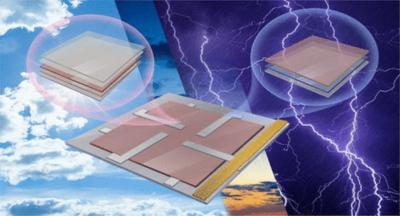Researchers from Soochow University, Xi'an Jiaotong-Liverpool University and Egypt's National Research Centre have developed a novel approach for making an all-weather solar cell that is triggered by both sunlight and falling raindrops.

They designed the solar cell by integrating a triboelectric nanogenerator (TENG) and perovskite solar cells to harvest raindrop energy and solar energy efficiently to provide a distributed energy source.
Developed over the past several years, TENG technology has advanced to the point where it can power small electronic devices, potentially enabling widespread sensing and infrastructure systems as well as powering wearable consumer devices.
So far, there have been several raindrop solar cells designs, all of them based on silicon solar cells. However, compared to the output power of solar cells, the energy conversion of the rainwater harvesting devices has been very small, so it has often been ignored.
In order to boost the power generation of rainwater by magnitudes, the researchers developed a new approach to make raindrop solar cells of practical use. To construct an effective raindrop solar cell adequate for not only enhancing the water droplet energy harvesting but also avoiding the reduction of solar cell performance, the researchers designed an architecture that integrates a MoO3/top electrode-based TENG (MT-TENG) and perovskite solar cells.
The researchers inserted the MoO3 electron blocking layer in a transparent indium tin oxide (ITO) electrode and fluorinated ethylene propylene (FEP) polymer triboelectric layer, constructing the MT-TENG, which avoids the charge-shielding effect between the interfaces and polarizes FEP to increase and keep the charge captured.
Introducing this concept of the electron blocking layer into the TENG at the solid'liquid interface improves the efficiency of harvesting raindrop energy. As the team points out, the interlayer design enables every water droplet to generate a colossal electrical output.
In addition, the MT-TENG is attached to the entire perovskite solar cell by a shared electrode, which hardly affects the photovoltaic power conversion efficiency of the solar cell.
Using dripping tap water to simulate raindrops falling on the MT-TENG, the researchers measured a maximum output electrical power of 0.67 mW obtained at 1 MΩ.
Although the output loss (0.33 W/m2) of solar cells cannot be ignored, the average output power of the MT-TENG (0.568 W/m2) is far greater than the loss of the solar cell, which proves the rationality of constructing a raindrop solar cell.



